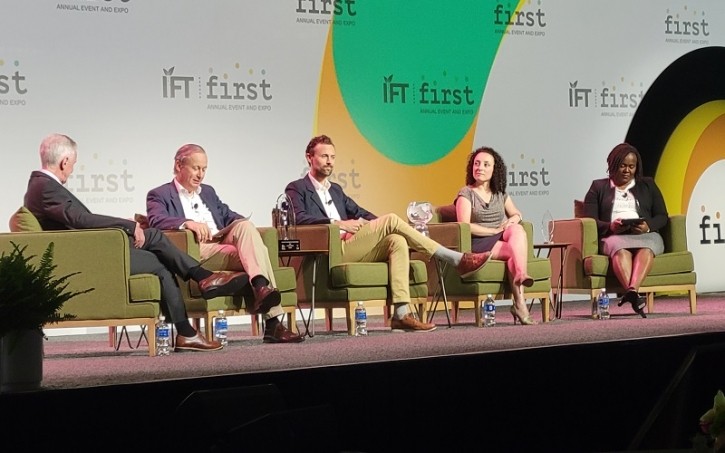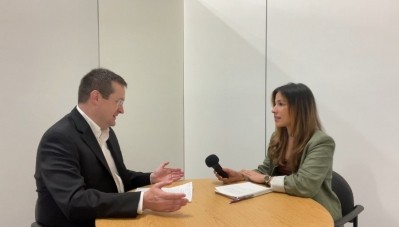IFT FIRST
IFT FIRST: Seeding the Future Global Food System Challenge 2022 winners discuss creating a more sustainable food system

“Our foundation initiated the Global Food System challenge two years ago. Its goal is to inspire and support thoughtful and committed teams of innovators and entrepreneurs to create, grow, and to accelerate innovative solutions that can transform our food system. Innovations to enable more equitable access to nutritious food, reduce food waste, ... make food systems more resilient and sustainable, and empower consumers to make conscious choices that benefits both the customers and planetary health," van Lengerich said.
The 2022 winners tackle nutrients, sustainability in the global food system
With its annual award program, Seeding the Future Foundation provides financial support to food and beverage innovators and organizations within the CPG, non-profit, and academic sectors that are reducing food waste and creating a more equitable food system around the globe, van Lengerich explained.
When it comes to addressing the issue of global hunger and building a more sustainable food system, van Lengerich noted that four strategies are critical: food loss and waste needs to be dramatically reduced, the crop yield gap needs to be closed and more land needs to be available to grow crops for humans, diets (especially in the West) need to shift away from animal-based protein consumption and to plant-based alternatives, and more resilient supply chains need to be built to reduce carbon pollution.
Currently, Seeding the Future Foundation is accepting applications for its 2023 award until Aug. 1, 2023. And of the “over 1,500 teams from for profit and non-for-profit organizations” applications that were submitted in the first two years of the program, van Lengerich presented the following 2022 winners with awards at the IFT FIRST event:
- Rob Johnson, CEO of Acceso, received a Grand Prize last year for his company’s work in creating an aflatoxin-free supply chain in Haiti, through a system that combines farmers incentives, testing, and logistics.
- Julia Kurnik, senior director of innovation start-ups at World Wildlife Fund, took home a Growth Grant in 2022 for her organization effort to create a system that “enables equitable access to nutritious food for those in need, while at the same time avoid spoilage of fresh produce at the farm level,” van Lengerich said.
- Innocensia John, post-doctoral researcher at University of Dar es Salaam, and her team was awarded Seeds Grant last year for their work on studying the indigenous crops and how their “potential to significantly reduce micronutrient deficiencies not only in Tanzania but other countries in the region as well,” he added.
Connecting the dots between farmers and consumers in the US and abroad
While the winners come from different areas of the food and beverage industry, each worked with local communities, farmers, and consumers to find a way to reduce food waste and promote access to nutritional food.
With pilot programs in Connecticut and Virginia, the World Wildlife Fund is connecting consumer with farm-fresh product through its Farmers Post program, which relies on the United States Postal Service to send produce from the farm directly to consumers, Kurnik said. Not only does this provide an avenue for farmers to sell their produce directly to consumer, but it also helps address the nine in 10 American adults who don’t eat enough servings of vegetables, she added.
“There's really a lack of connection directly between farmers and consumers and this hurts pretty much everyone across the entire supply chain. It certainly hurts farmers, many of who struggle to return any higher profit farmers. Vegetable farmers in this country keep just seven or eight cents of every dollar that you were I would spend on groups in the grocery store.”
Acceso worked with farmers to rid aflatoxin from the peanut supply chain in Haiti, by working with crop scientists, food scientists, economists and the local farmers, Johnson said. Additionally, Acceso encouraged moving away from aflatoxin in agriculture with its “social enterprise model” that connected local growers with prospective buyers, he added.
“We tackled this problem in innovative and integrated way where we work to connect the dots. So we have a system that we use that uses a combination of incentives, testing, and logistics. Farmers are incentivized to sell through this platform because they get fair prices," Johnson said. "Buyers are incentivized buy through this platform not because they pay a premium but they have stable prices, they have convenient and optimized delivery schedules. And then we basically put in-between the two, the logistics, testing, the warehouse and ... we connect these dots.”
Lastly, John and her team of researchers are exploring Tanzania’s “101 orphan crops,” which are crops used regionally but typically not internationally, that could be used to improve the health of consumers in the country and nearby regions. The team of research is also working with research in Zambia, South Africa, and Malawi “to explore what ingenious crops do they have in that country” and educate consumers on their use and benefit within local communities.
“What we have done so far is we have traced these crops.... Where are they found? Are they in the market? Why don’t they reach the market? What are the consumers saying about these crops? For instance, if a person posts on jackfruit, you'll be surprised that the majority of the Tanzanians ... don't even know what a jackfruit is.”





















